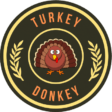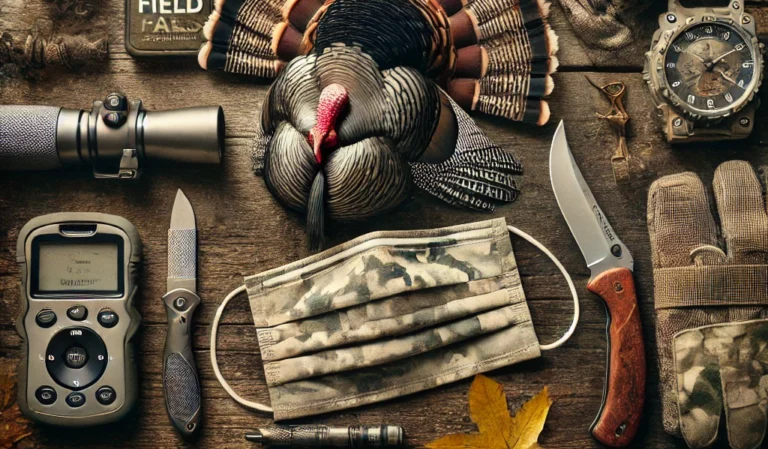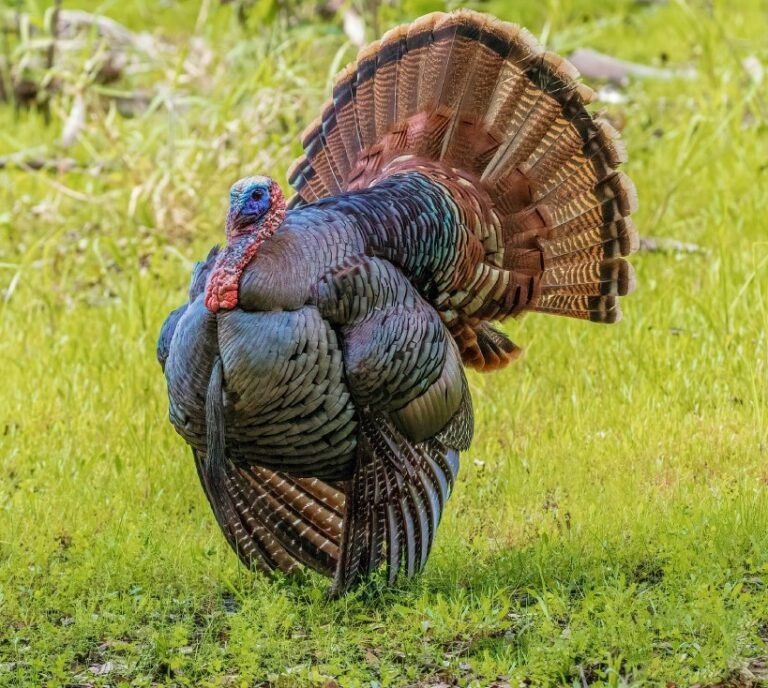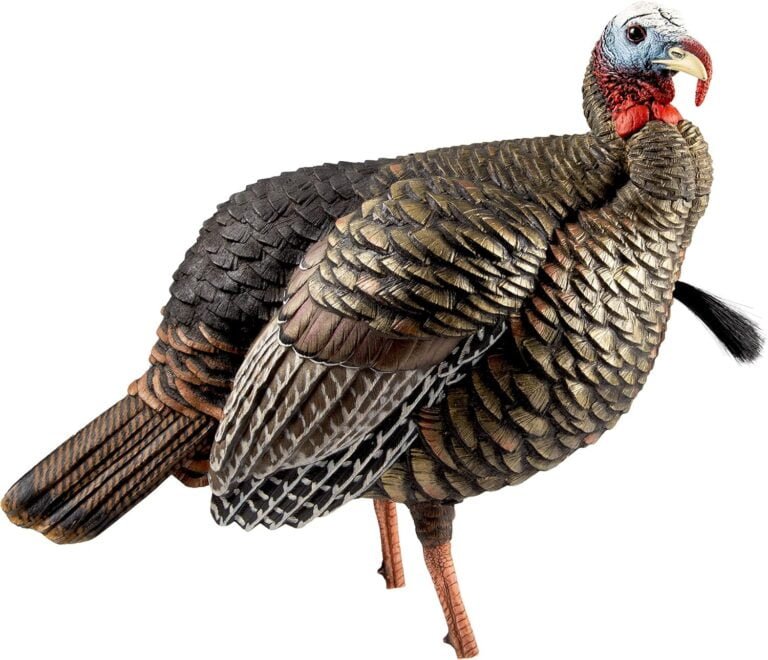Best Time to Turkey Hunt: 5 Insights to Hunting Success
Turkey hunting is an exhilarating outdoor pursuit that has captured the hearts of many passionate hunters. This cherished pastime has gained immense popularity due to its rich history deeply rooted in American culture. In this blog, we discuss the best time to turkey hunt.
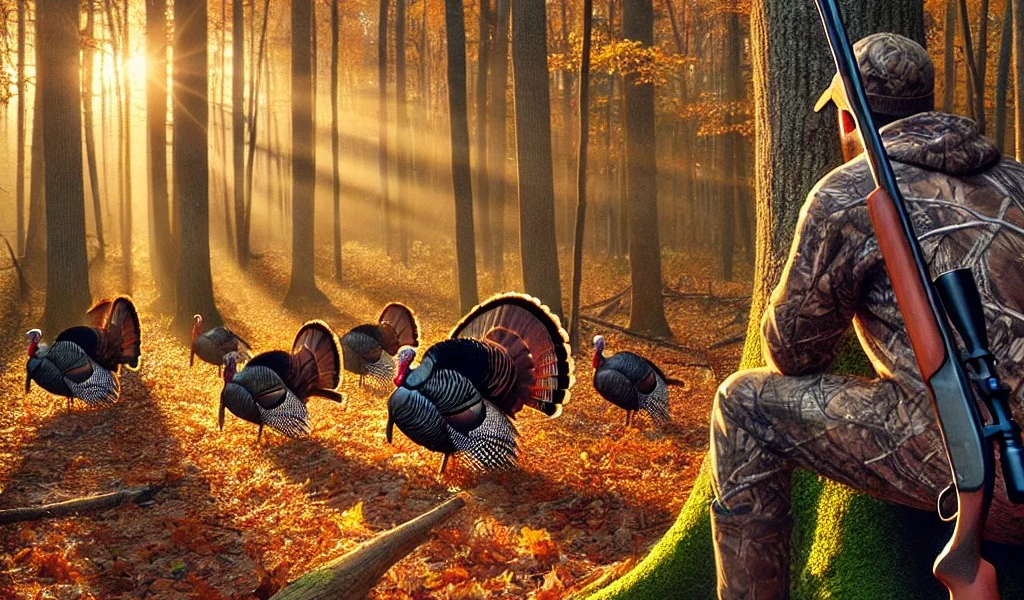
Whether you are an experienced hunter or a novice looking to embark on this thrilling adventure, turkey hunting offers a unique blend of strategy, skill, and connection with nature. In this blog, we will discuss the best time to turkey hunt.
The excitement lies in the challenge of outsmarting these wily birds with keen senses and remarkable instincts. It’s not just about bagging a prize gobbler; it’s about immersing oneself in the beauty of the wilderness and experiencing the thrill of matching wits with one of nature’s most elusive creatures.
Importance of timing for a successful hunt
Timing plays an integral role in determining the success or failure of your turkey hunting expedition. Seasoned hunters understand that being in sync with nature’s rhythms is crucial for turkey hunting.
These magnificent birds follow distinct patterns dictated by their breeding season, weather conditions, and daily routines. To maximize your chances of achieving a victorious hunt, careful consideration must be given to selecting the best time to pursue these elusive game birds.
The perfect timing revolves around two primary factors: breeding season and weather conditions. During the breeding season, male turkeys (known as gobblers) become more vocal and active while attempting to attract mates through their resonating gobbles and vibrant displays.
This period is often called “turkey talk” because it offers an excellent opportunity for hunters to use effective calling techniques. Additionally, weather conditions significantly influence turkey behavior and movement patterns.
Understanding how turkeys react during weather situations can be invaluable when planning your hunt. Factors such as temperature fluctuations, rainfall levels, wind speed, and barometric pressure can all impact turkey activity.
For instance, during warmer days, turkeys tend to be more active, while they may seek shelter and reduce movement during inclement weather. By closely monitoring weather forecasts and adjusting your hunting plans, you can position yourself for a more productive hunt.
In essence, timing is the key to unlocking the secrets of successful turkey hunting. By aligning yourself with the rhythms of the breeding season and keeping a watchful eye on weather conditions, you are poised to make the most out of your hunting experience.
Factors Influencing the Best Time to Turkey Hunt

Breeding Season
Turkey’s breeding habits and rituals are fascinating aspects of their behavior that influence the best time to embark on a successful hunt. During the breeding season, which typically occurs in spring, male turkeys, or toms, become more active and vocal as they compete for the attention of female turkeys, known as hens. This is when you’ll hear their distinctive gobbling echoing through the woods.
The ritualistic behaviors during this time include strutting, displaying their magnificent tail feathers, and emitting low-pitched booming sounds called drumming. Hunters need to understand these breeding habits because, during this period, turkeys are more responsive to calls and decoys as they actively seek mates.
Therefore, focusing on the peak breeding season is key if you want a higher chance of encountering turkeys and engaging them in interaction during your hunt.
Weather Conditions
Believe it or not, weather plays a significant role in turkey behavior and movement patterns. There are several factors to consider regarding ideal weather conditions for a productive hunt. Turkeys prefer mild temperatures around 45-70 degrees Fahrenheit (7-21 degrees Celsius) because extreme heat or cold can limit their movements or force them into lethargy.
Additionally, calm wind conditions are preferable as strong gusts can make it challenging for turkeys to hear calls effectively and may make them more cautious about venturing into open areas where they feel vulnerable. Rainfall can also affect turkey activity; drizzles may not deter them much, but heavy downpours tend to keep them hunkered down under cover until the rain subsides.
Time of Day
Understanding turkeys’ daily routines and feeding patterns is crucial when determining optimal timeframes for hunting. Turkeys are diurnal creatures, meaning they are most active during the day, with peak activity occurring in the early morning and late afternoon.
At dawn, turkeys wake up from their roosting sites and descend to the ground to feed on insects, seeds, berries, and other food sources. This is an excellent time to catch them off guard as they are still groggy and focused on filling their bellies.
As the day progresses, turkeys often retreat to shaded areas or open fields to rest or engage in dusting behavior, rolling around in dry dirt to clean their feathers and remove parasites. Late afternoon provides another fruitful window for hunting as turkeys start actively feeding again before returning to their roosts at dusk.
By aligning your hunting schedule with these natural rhythms of turkey activity, you maximize your chances of encountering these elusive birds during their most vulnerable moments.
By considering factors like breeding season dynamics and weather conditions that influence turkey behavior and understanding optimal hunting times based on the daily routines of these remarkable creatures, you can strategically plan your turkey hunts for increased effectiveness and a higher chance of success.
Spring Turkey Hunting Season
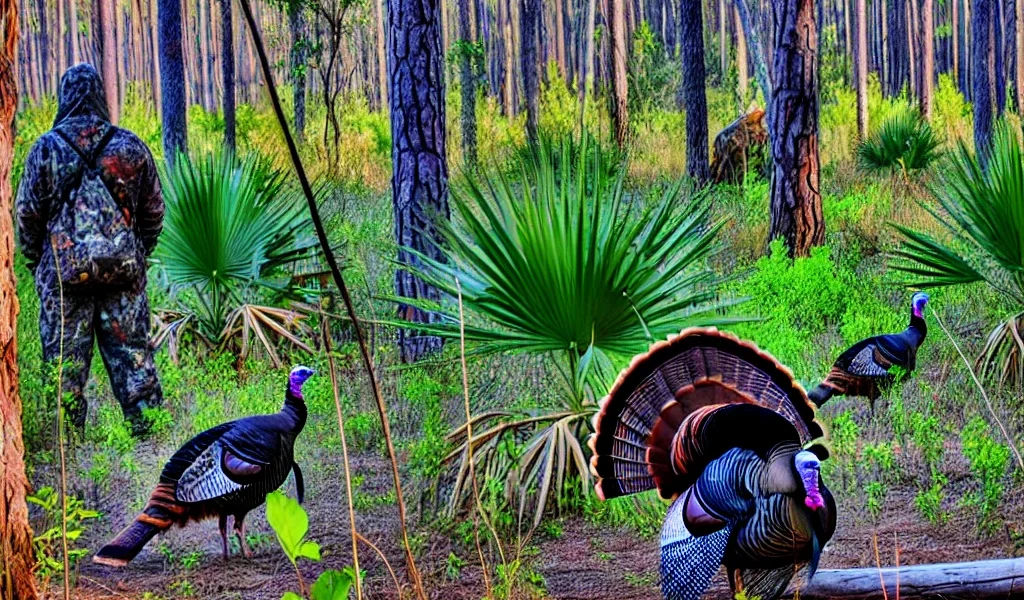
Spring turkey hunting stands as the pinnacle of the gobbler pursuit, a season where nature awakens in full force and hunters eagerly return to the field. As winter’s chill finally loosens its grip, the wild is alive once more, and so begins the timeless dance between hunter and turkey.
Why is spring revered as the crown jewel of turkey hunting seasons? Let me take you into the heart of it, where feathers fan and gobbles echo through the warming air.
The Advantages of Spring Turkey Hunting
Spring ushers in a bounty of advantages for turkey hunters. At the forefront is the turkeys’ breeding season, which makes those elusive gobblers far more vocal and active. In their quest to woo hens, these love-struck toms respond more eagerly to well-timed calls, creating perfect opportunities for hunters to outwit them.
This heightened activity isn’t the only advantage. The extended daylight of spring means longer hunting hours, allowing hunters the luxury of time—time to strategize, adjust, and wait for that perfect moment to strike. Each day stretches out like an open canvas, offering endless potential for adventure and success.
Spring’s lush foliage adds another layer of benefit. The bloom of wildflowers, fresh leaves, and thick brush not only beautifies the landscape but provides natural cover for hunters looking to blend seamlessly into their surroundings.
Moreover, in many regions, spring is the prime turkey hunting season, making it a tradition that brings together enthusiasts from all walks of life. The camaraderie of shared stories, techniques, and triumphs only adds to the allure of the hunt.
The Challenges We Face
But, like any great endeavor, spring turkey hunting comes with its challenges. With the popularity of this season comes increased competition. More hunters in the field mean fewer prime spots, requiring early risings and perhaps a bit more creativity in finding that perfect location.
The weather, too, can be fickle. Spring’s unpredictable storms and sudden temperature changes can disrupt both hunters and gobblers alike. Turkeys may become more cautious or shift their routines under erratic conditions, leaving hunters to adapt on the fly. But as seasoned hunters know, understanding turkey behavior and adjusting to the whims of weather is all part of the hunt’s thrill.
Fall Turkey Hunting
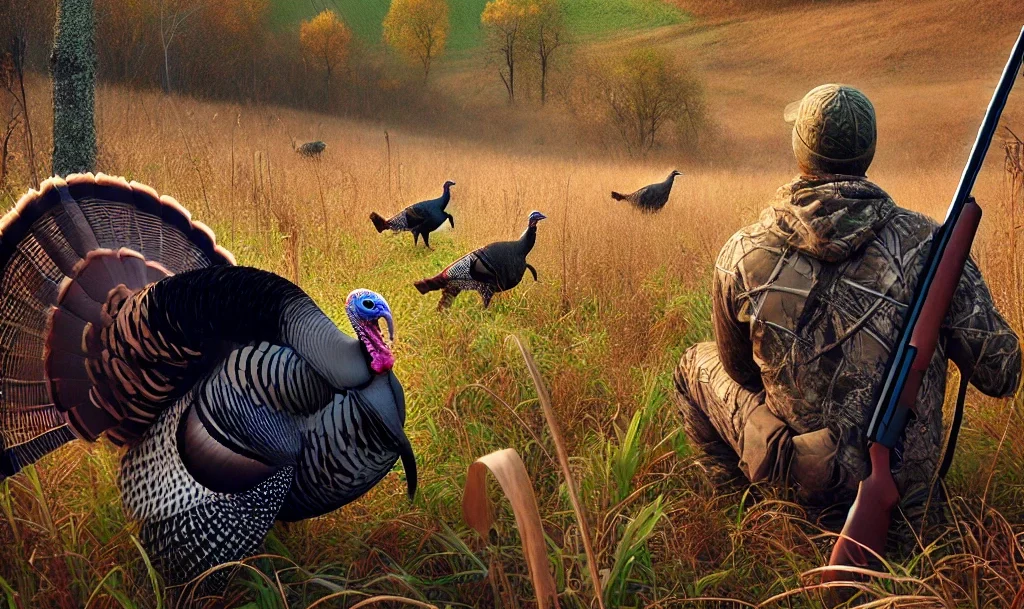
While spring often steals the spotlight, fall turkey hunting offers a unique and equally rewarding challenge for those who dare to take it on. As the air cools and the leaves turn, hunters venture into the golden woods to face turkeys in a different phase of their behavior—cagey, cautious, and keenly aware of their surroundings.
But what makes the fall season stand out, and why should hunters embrace it with the same passion as spring? Let’s dive into the heart of what makes fall turkey hunting a pursuit for the savvy and the patient.
The Advantages of Fall Turkey Hunting
Fall brings with it a new dynamic for turkey hunters. Unlike the vocal courtship of spring, fall turkeys are more focused on flocking and feeding, making them more predictable in their daily movements. Tracking and scouting become essential tools, as knowing where the birds feed and roost gives hunters a significant advantage.
One of the biggest perks of fall hunting is the opportunity to harvest either sex—hens or toms—depending on state regulations. This flexibility opens up more chances for success and allows for varied hunting strategies. You’re not just chasing gobbles; you’re tracking groups, setting ambushes, and taking advantage of turkey behavior in their quest for food.
Fall also brings quieter woods, with fewer hunters vying for the same space. Without the intense competition of spring, hunters can enjoy more solitude and the peaceful beauty of autumn landscapes. The calm of a crisp fall morning, with mist rising off the fields and the crunch of leaves underfoot, is a special kind of thrill in its own right.
The Challenges We Face
However, fall turkey hunting isn’t without its challenges. Turkeys are less vocal in the fall, relying more on their keen eyesight and social dynamics within flocks. This makes calling less effective, so hunters must rely on stealth, patience, and strategic setups to get within range of these sharp-eyed birds.
Another hurdle is the turkeys’ group mentality. In fall, they tend to stay in flocks for safety, which means they’re more cautious and alert. One misstep, and the entire group can vanish into the woods in seconds. It’s a season that demands careful planning, expert scouting, and the ability to read the birds’ patterns.
Weather can also be unpredictable, with early frosts or sudden downpours adding an extra layer of difficulty. However, these challenges are part of what makes fall turkey hunting so rewarding—success feels hard-earned and well-deserved.
Specific Considerations for Different States
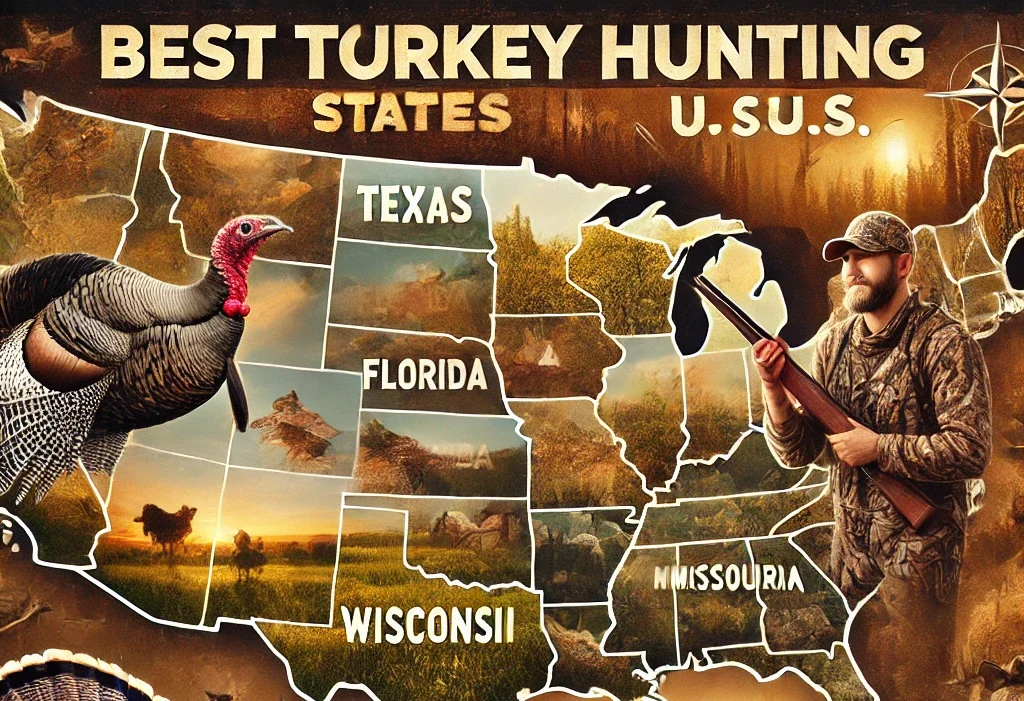
Regional variations in turkey populations
Understanding the regional variations in turkey populations and behavior is crucial for a successful hunt. Different states or regions may have distinct subspecies of turkeys with unique characteristics. For instance, the Eastern wild turkey is the most widespread subspecies across various states like Alabama, Georgia, and Pennsylvania.
On the other hand, the Merriam’s wild turkey thrives in mountainous regions such as Colorado and Wyoming. Each subspecies has its behaviors and tendencies with which hunters must familiarize themselves. Additionally, it’s essential to research and abide by specific state regulations regarding bag limits, hunting seasons, and weapon restrictions to ensure compliance with local laws.
Notable states with exceptional turkey hunting
Every state offers some turkey hunting opportunities, and certain regions have gained recognition for their outstanding prospects. One such region is the “Turkey Belt,” encompassing parts of Mississippi, Alabama, Georgia, and South Carolina – renowned for its abundant population of Eastern wild turkeys.
These states boast diverse landscapes, including expansive forests with ample roosting sites and open fields where turkeys like to strut their stuff during mating season.
Another noteworthy destination is Texas, which offers a variety of subspecies, including Easterns in eastern Texas and Rio Grande in central and south Texas. Furthermore, Kansas and Nebraska are known for their thriving populations of Merriam’s turkeys amidst stunning scenic backdrops like rolling prairies or rugged mountains.
By understanding these regional variations and researching specific areas known for exceptional hunting opportunities, hunters can strategically plan their trips accordingly to maximize their chances of success while immersing themselves in diverse landscapes across different corners of our great country.
Tips for Maximizing Success During Turkey Hunting Season

Before stepping foot into the wild, preparation is key to a successful turkey hunt. Scouting is your secret weapon for unlocking turkey behavior and locating their prime habitats.
Start by identifying potential roosting sites, focusing on tall trees with sturdy branches that turkeys prefer. Look for clues like scattered feathers, a telltale sign of roosting spots.
Keep an eye out for other indicators, such as fresh droppings, scratch marks on the forest floor from feeding, and tracks left in soft soil or mud. Observing turkeys at dawn or dusk will give you valuable insight into their movement patterns, helping you pinpoint the best locations to set up your hunting spot for maximum success.
Perfecting Your Turkey Calling Techniques
Mastering turkey calls is an essential skill that can significantly increase your chances of a successful hunt. The goal is to replicate the sounds turkeys use during social interactions, like mating calls or flock communication. Start by practicing the basics—yelps, clucks, purrs, and cuts—using tools like a box call, slate call, or diaphragm mouth call.
Authenticity is critical, so focus on nailing the right tone and rhythm to make your calls as realistic as possible. Consider adding decoys near your setup to enhance the effectiveness of your calling, giving approaching gobblers a sense of safety and drawing them in closer.
The Art of Camouflage and Concealment
Turkeys are notoriously sharp-eyed, so blending seamlessly into your environment is crucial. Choose camouflage gear that matches the landscape you’ll be hunting in—whether it’s woodland patterns with earthy browns and greens or grassy hues for open fields. Choose lightweight, breathable fabrics that allow for easy movement while keeping you hidden.
Cover any exposed skin with matching face masks, gloves, and hats to avoid drawing attention. Turkeys can detect even the smallest flash of shine, so ensure that your gear is free of any unnatural reflections or glossy finishes. The more invisible you are, the better your chances of staying undetected.
Gearing Up for Success: Essential Tools for the Hunt
Equipping yourself with the right gear can make all the difference in a successful turkey hunt. Start with a reliable shotgun—most hunters opt for a 12 or 20-gauge—paired with ammunition designed for tight shot patterns and longer range. A high-quality choke tube will also help improve your accuracy and effectiveness.
Other essential items include a well-fitted backpack to carry necessities like water, snacks, extra calls, binoculars, and first aid supplies. A portable ground blind or camouflaged chair is a great option if you’re hunting in open areas without sufficient natural cover, giving you additional concealment during longer hunts.
Above all, prioritize safety. Always practice proper firearm handling, and familiarize yourself with local hunting regulations before heading out into the field.
Bringing It All Together
With these strategies in hand, you’re well on your way to a successful turkey hunting expedition. Be patient and observant like a skilled tracker, hone your calling techniques like a seasoned musician, and blend into your surroundings like a master illusionist. With preparation, focus, and the right gear, your chances of success are higher than ever. Good luck, and happy hunting!
